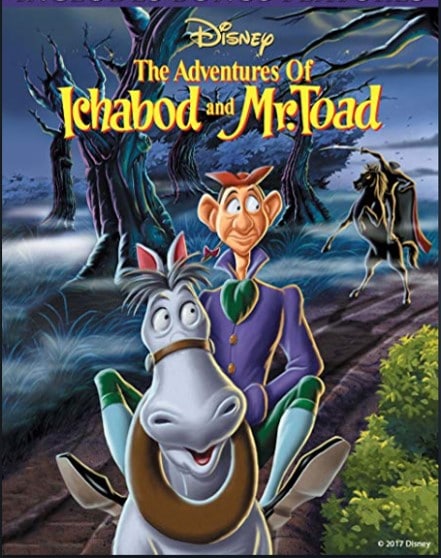Category — A Friday Visit with Jim Korkis
A Friday Visit with Jim Korkis: Cranium Command in Wonders of Life
Welcome back to Fridays with Jim Korkis! Jim, the dean of Disney historians, writes about Walt Disney World history every Friday on yourfirstvisit.net.
CRANIUM COMMAND
By Jim Korkis
Cranium Command opened at Epcot on October 19, 1989 as part of the new Wonders of Life pavilion, sponsored by Metropolitan Life Insurance Company (MetLife). The premise of the attraction, directed by Jerry Rees, is that the guest is inside the head of a twelve year old boy (voiced by Scott Curtis) who is being piloted by a new, young, inexperienced recruit named Buzzy.
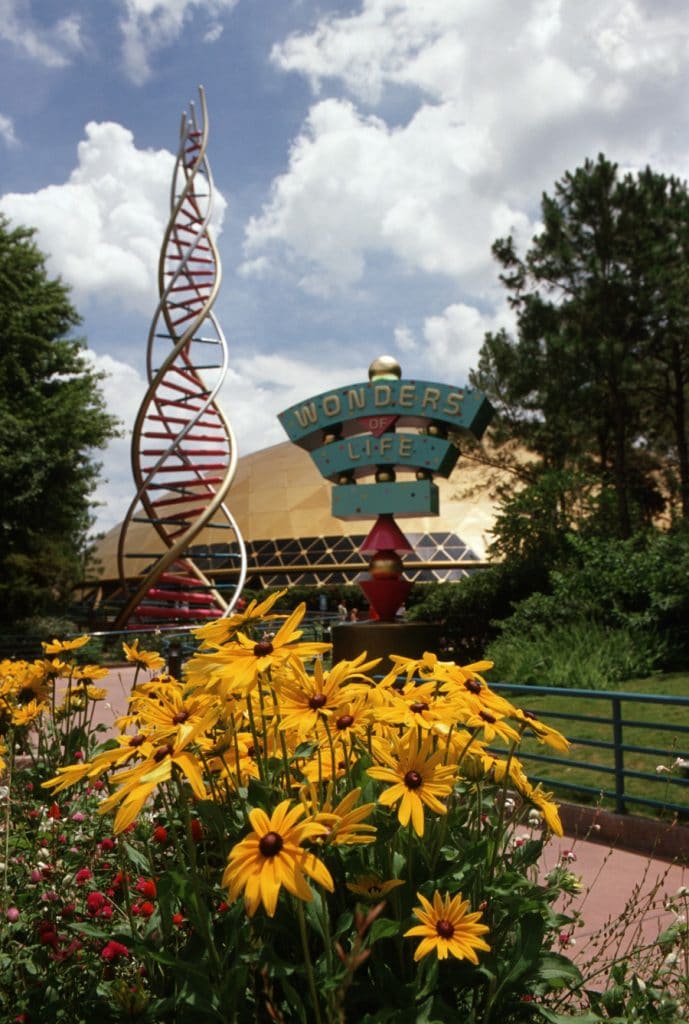
(C) Disney
Guests meet Buzzy as an animated character and learn his mission, and the consequences for failure in the pre-show directed by Kirk Wise and Gary Trousdale. It was the very last project at Disney Feature Animation to be traditionally inked and painted on cels. Pete Docter was an animator on the project, and later admitted that it helped inspire his own Pixar feature film Inside Out.
The direction of the five minute pre- show animation segment was so impressive that Disney executive Jeffrey Katzenberg assigned the team of Wise and Trousdale to direct the animated feature Beauty and the Beast and later Hunchback of Notre Dame.
Wise, by the way, provides the monotone voice for the Hypothalamus after the guests entered the main 200 seat auditorium where Buzzy was now portrayed by an audio-animatronics figure.
On several screens, celebrity actors including Charles Grodin, Jon Lovitz, Kevin Nealon, Dana Carvey, Bobcat Goldthwait, Kevin Meaney and George Wendt play various body functions like the left and right brain, the ventricles of the heart, adrenal gland and stomach. Their humorous responses to the various activities help explain the function of those organs.
In a seventeen minute show, Buzzy had to deal with a typical day of misadventures at school from missing the school bus to an accident in chemistry class to dealing with bullies and an infatuation with a female schoolmate. It was the hope that the show might be reprogrammed over the years to tell different stories dealing with how the body functions rather than just stress management.
MetLife ended its sponsorship of the Wonders of Life by June 2001. Although the MetLife logos disappeared from the pavilion, Cranium Command and most of the pavilion’s other attractions continued to operate normally through 2003. In 2004, the Wonders of Life pavilion became seasonal, and was open fewer days each year.
On New Year’s Day 2007, the Wonders of Life was officially closed. The domed pavilion became the Festival Center for Epcot’s Food & Wine Festival in fall and for Epcot’s Flower & Garden Festival in spring.
In February 2018, Disney announced that the location would become the PLAY! Pavilion, “a digital metropolis where guests will discover an interactive city bursting with games, activities and experiences that connect them with friends, family and beloved Disney characters—both real and virtual—like never before.”
A still unsolved mystery is what happened to the Buzzy audio-animatronics figure that disappeared from the closed attraction. The pressurized hydraulic lines were clumsily cut in order to remove the three hundred pound figure.
According to an Orlando police report, Patrick Allen Spikes was charged with burglary, grand theft, and dealing in stolen property of Buzzy’s bomber jacket, headset and green hat that he sold for $8,000 and ended up in the possession of NBA player Robin Lopez.
However Spikes denied taking the figure itself, which is still missing, despite some reports that a Disney department removed it without informing any other departments. The Orlando police still consider it missing.
* * * * *
Thanks, Jim! And come back next Friday for more from Jim Korkis!
In the meantime, check out his books, including his latest, Disney Never Lands, and about planned but unbuilt concepts, and Secret Stories of Walt Disney World: Things You Never You Never Knew, which reprints much material first written for this site, all published by Theme Park Press.
Follow yourfirstvisit.net on Facebook or Twitter or Pinterest!!
March 20, 2020 No Comments
A Friday Visit with Jim Korkis: The Disney Inn
Welcome back to Fridays with Jim Korkis! Jim, the dean of Disney historians, writes about Walt Disney World history every Friday on yourfirstvisit.net.
THE DISNEY INN
By Jim Korkis
The former Walt Disney World Golf Resort was originally a building located in the middle of the Palm and Magnolia golf courses. It was designed to look like a two story country club and did not have any guest rooms.
Guest wings were added in 1973 as part of Walt Disney World’s Phase 2 expansion. It retained the name The Golf Resort, and was not generally considered a Walt Disney World resort because of its small size and not being on the monorail loop, among other things.
In February 1986, Disney expanded the resort and renamed it The Disney Inn in hopes of attracting more than just golfers, promoting it as having the intimate and rustic charm of a quiet country inn. It was mildly re-themed to Snow White and the Seven Dwarfs in hopes of reinforcing the Disney connection.
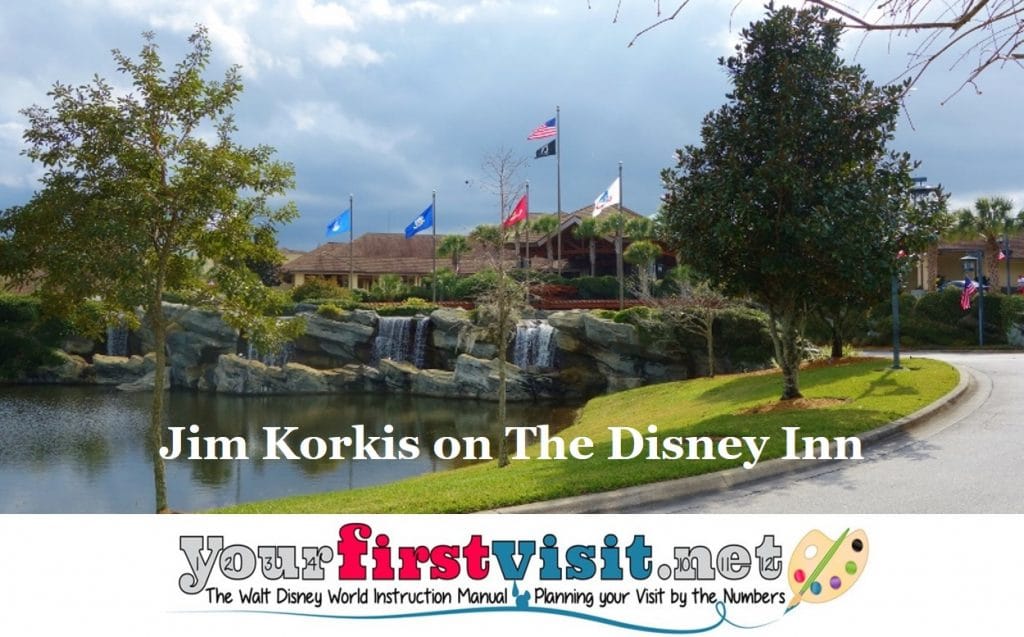
My friend Rich Cullen, who still works at Walt Disney World, worked the front desk of the Disney Inn during its last three years of existence and generously shared some of his memories of the resort before it became Shades of Green.
Rich Cullen: “It is my understanding that when people heard the name ‘Golf Resort’ they thought they had to be golfers to stay there. The story goes that when the name was changed to The Disney Inn and a Snow White theme was created, occupancy went up significantly, [and] not just people who couldn’t get into the Contemporary or the Polynesian.
“From what I remember, at Christmas time Dopey and Snow White would make nightly appearances with the kids and I believe warm cider was served. I also remember that Mrs. Claus would make appearances to read a Christmas story.
“The rooms were large compared to other Disney resorts, a little less than 500 square feet as I recall. The newer rooms were brighter and the decor had a cottage charm with details like an oak headboard but nothing crazy in terms of a Snow White/Dwarfs theme. There were just subtle touches that didn’t hit you over the head. The wonderful sign at our entrance was a yawning Sleepy holding a candle as if he was going off to bed and that logo was on everything.
“Most of the remodeled rooms had a framed original muted color print that included some images of objects relating to the story of Snow White. The rooms had two queen beds and a pull out love seat as well as a small round table with two chairs. Some of the rooms had King beds which we commonly reserved for honeymooners.
“Three types of room view categories: Garden View, Golf Course View (both of which were roughly $185 during the regular season) and Pool View (that was $195 during the regular season).
“The Garden Gallery was the main restaurant right off of our lobby and it served breakfast, lunch and dinner. Their specialty was “fried ice cream” which was similar to the fried ice cream that was popular at the Mexican chain restaurant called Chi-Chi’s.
“We still served a lot of golfers. There were actually three golf courses. The Palm, The Magnolia and a great nine hole walking course called Oak Trails. There were two swimming pools at the Inn with the large family pool being in the shape of Mickey Mouse’s head.
“I met a lot of celebrities who stayed there because it was quiet and more secluded, like actor Robert Conrad, Samuel E. Wright (voice of Sebastian the crab), the band Kansas, animator Bill Justice, the illusionist Franz Harary and so many more. I have so many fond memories of working there but the cast members I work with today don’t know it even existed!”
* * * * *
Thanks, Jim! For more on Shades of Green, see this. And come back next Friday for more from Jim Korkis!
In the meantime, check out his books, including his latest, Disney Never Lands, and about planned but unbuilt concepts, and Secret Stories of Walt Disney World: Things You Never You Never Knew, which reprints much material first written for this site, all published by Theme Park Press.
Follow yourfirstvisit.net on Facebook or Twitter or Pinterest!!
March 14, 2020 No Comments
A Friday Visit with Jim Korkis: the Mickey Mouse Revue
Welcome back to Fridays with Jim Korkis! Jim, the dean of Disney historians, writes about Walt Disney World history every Friday on yourfirstvisit.net.
THE MICKEY MOUSE REVUE
By Jim Korkis
This week, Mickey and Minnie’s Runaway Railway opened at Disney’s Hollywood Studios and is the first dark ride featuring the mouse that started it all. In the past, Imagineers proposed several different Mickey Mouse dark rides, including Mickey’s Mad House using a traditional Wild Mouse Coaster to experience the wild antics of early black-and-white Mickey Mouse animated cartoons.
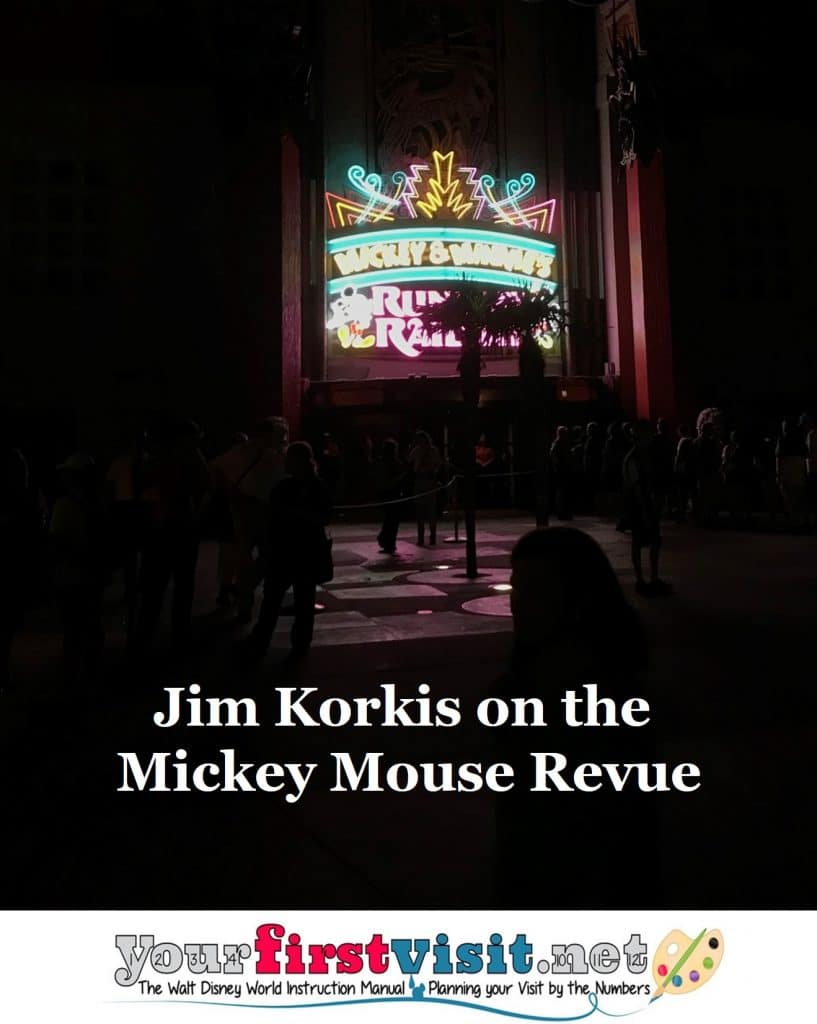
“(Walt Disney Imagineering) had designed some imaginative shows for the parks, but we seemed to be getting away from our heritage. What we needed was a reminder of what Walt had accomplished. I pulled out a sheet of paper and got to work,” Justice told me in an interview. “Mickey Mouse would have to be the main figure.
“The show we had in mind was this: Mickey Mouse would lead an orchestra of Studio characters through a medley of Disney tunes. He had led orchestras in many of his cartoons so it seemed a natural fit. Then on the sides of the stage and behind the orchestra, scenes from our most popular animated features would appear one by one. Mickey and his orchestra would close the performance.
“One big problem surfaced: Mickey. With 33 functions crammed into a 42-inch body, he was the most complex audio-animatronics figure to date. He also became my biggest programming challenge because I had to do extreme movements so it would appear that Mickey was keeping up with the tempo.”
Imagineers John Hench and Blaine Gibson were also significantly involved in the show. There was an eight minute pre-show featuring an overview of Mickey’s animated career as well as the use of sound in animation.
There were a total of seventy-three different Disney animated characters who performed in the show, from the Fab Five to Humphrey the Bear, Timothy Mouse, Winnie the Pooh, Baloo, Scrooge McDuck and many, many more that filled the 86-foot-long stage. However, there were a total of 81 figures since some characters appeared at different places on the stage, like the Three Caballeros, or in different costumes.
Justice said, “Roy O. Disney looked the finished model over, then paid me the best compliment I ever had in my career: ‘This is the kind of show we should spend our money on’.”
The attraction closed at Walt Disney World on September 14, 1980, and was moved to Tokyo Disneyland, where it was an opening day attraction in April 1983, and continued to operate until May 2009.
Justice recalled, “The theater seated 504 people, but the space available for the pre-show could only accommodate 300 because of a mistake that someone had made. Unfortunately, there was no time or money left to make further changes. It came as a shock when I was told my pride and joy was being moved to Tokyo Disneyland. ‘Because it never played to full capacity’. Of course not! How can you fill 504 seats with 300 people?
“Tokyo Disneyland wanted it because it was so cute. It saved the Disney Company money because it was the only attraction that was shipped directly to Japan rather than being replicated. It helped make the opening deadline on time. It would have been time consuming and expensive to build it from scratch in Tokyo. It was the first attraction closed at the Magic Kingdom.”
At the Magic Kingdom, the building eventually became the home to another Mickey attraction, Mickey’s PhilharMagic, that opened in 2003, where once again Mickey is leading an orchestra although he only appears briefly in the show.
* * * * *
Thanks, Jim! And come back next Friday for more from Jim Korkis!
In the meantime, check out his books, including his latest, Disney Never Lands, and about planned but unbuilt concepts, and Secret Stories of Walt Disney World: Things You Never You Never Knew, which reprints much material first written for this site, all published by Theme Park Press.
Follow yourfirstvisit.net on Facebook or Twitter or Pinterest!!
March 6, 2020 No Comments
A Friday Visit with Jim Korkis: Project Future
Welcome back to Fridays with Jim Korkis! Jim, the dean of Disney historians, writes about Walt Disney World history every Friday on yourfirstvisit.net.
YOUR PERSONAL DISNEY LIBRARY (26)
By Jim Korkis
- Project Future by Chad Emerson
With the upcoming 50th anniversary of Walt Disney World, more attention has been given to how this popular vacation destination was originally developed. When this book came out in 2010, there were very few reliable resources for people to satisfy their curiosity, so it filled a gap in Disney history.
Project Future was one of the code names for the Walt Disney World project before it was officially announced. At one point it was also known as Project Winter and later as Project X to try to keep the plans secret.
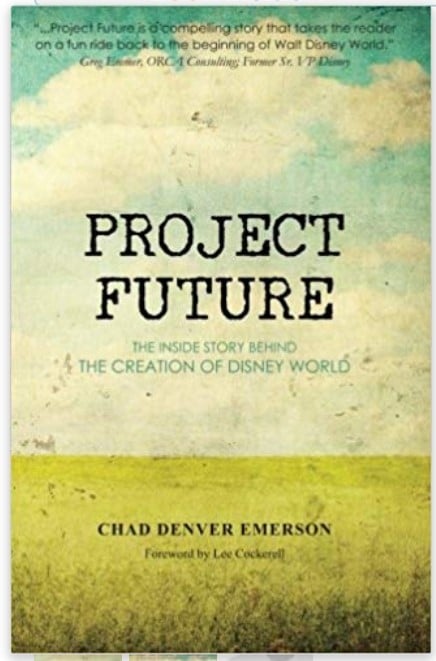
This book began as an academic paper on improvement districts (specifically Reedy Creek in Florida) and was revised and expanded for this publication which is one of the reasons it concentrates so heavily on the business and legal issues of building Walt Disney World and not on the creative decisions.
For readers looking to understand and appreciate the contributions of people like John Hench, Bill Evans, Dick Irvine and so many others, this book will not be helpful in the least. There is no discussion about the actual construction, the design and building of the attractions, or the challenges with the creation of the resort hotels.
However, for those wanting to get some clarity on the some of the financial and political manuvering that was done to build the vacation kingdom, this book will provide that insight and hopefully spark further investigation but it may have limited appeal to a general Disney fan.
There are no direct quotes anywhere in the book from people who worked on the project, which surprised me, because Emerson spent more than two years researching the material, and in the course of that research, interviewed people like Harrison “Buzz” Price, Robert Price Foster, former Governor Claude Kirk, and Tom DeWolf, who were all key figures in the building of WDW.
In addition, the book features laudatory quotes from Greg Emmer, Brad Rex and Lee Cockerell, who I know all had stories to share.
Thanks to dividing the information into short sections, the book can be read fairly quickly and the content is very concise. It is organized as a chronological timeline from the beginning of the search for a new site in 1959 to the opening of WDW in 1971. The information is accurate and the fact that it was published roughly a decade ago does not detract from its correctness, although later books have expanded upon this basic overview provided in the text.
There are no illustrations or visual aids in the book, and since the text details massive land transactions, a map or two would have been helpful to put things into proper perspective. The cover is an attempt to show an empty wilderness upon which Disney built its east coast kingdom but it does not represent the Central Florida wilderness at the time, nor is the image immediately appealling or suggestive of what is inside the covers.
There are two appendices. One is six pages with one paragraph descriptions of some of the key people mentioned in the book and their connection to Project Future. The other appendix is a four page brief timeline for the project. A brief bibliography is included as well.
The book may prove “dry” reading for most Disney fans and most, if not all, of the information shared in the book now exists in other books about the history of Walt Disney World and on websites. However, if you want a quick glimpse of the business behind building Walt Disney World, this may be the book for you.
* * * * *
Thanks, Jim! I bought this book in 2010, and used it in this post—one of my favorites on this site.
And come back next Friday for more from Jim Korkis!
In the meantime, check out his books, including his latest, Disney Never Lands, and about planned but unbuilt concepts, and Secret Stories of Walt Disney World: Things You Never You Never Knew, which reprints much material first written for this site, all published by Theme Park Press.
Follow yourfirstvisit.net on Facebook or Twitter or Pinterest!!
February 28, 2020 No Comments
A Friday Visit with Jim Korkis: The Legend of Sleepy Hollow
Welcome back to Fridays with Jim Korkis! Jim, the dean of Disney historians, writes about Walt Disney World history every Friday on yourfirstvisit.net.
THE LEGEND OF SLEEPY HOLLOW
By Jim Korkis
The Legend of Sleepy Hollow, written by Washington Irving in 1820, is a classic scary tale with iconic characters like Ichabod Crane and the Headless Horseman. Walt Disney decided to retell the story in the package animated film The Adventures of Ichabod and Mr. Toad (1949).
On October 16, 1957, Imagineer Ken Anderson submitted to Walt a concept for the haunted house at Disneyland that included this frightening finale that guests would have seen outside a huge picture window in the living room:
“Commence with a windy moonlit night with the reflection of the moon in the bayou beyond the graveyard. The clouds will obscure the moon and distant flashes of lightning and sounds of thunder will next be heard. While the sky is darkening, the ghostly apparition of the Headless Horseman will fade into view or appear from behind a distant tree and gallop toward the graveyard and house from right to left foreground.
“He will disappear behind some trees to the left, but the sound of his horse’s approaching hoof beats will continue to grow louder. Suddenly, he bursts into view in the courtyard just outside the windows and gallops across from left to right… reining to a noisy halt just out of view below the balcony on our right.
“His cape is the only part of him we need to see at this last crossing, since the shrubs will obscure the horse. His cape must match in color and value with the previous projected mirage. Next, a bolt of lightning against the sky and a werewolf’s howl signal the appearance of the ghosts rising from the tombs, first one, and then two, and more, until ghosts are materializing from the earth around the tombs as well as the tombs themselves.”
When Liberty Square was being built at the Magic Kingdom in 1970, Imagineer Tony Baxter pitched the idea of a dark ride based on The Legend of Sleepy Hollow to help the transition of the intersection from Fantasyland to Liberty Square. Guests would have ridden in hollowed-out spinning jack-o-lanterns through a variety of scenes until the final confrontation with the headless horseman.
The exterior architecture of the Sleepy Hollow food and beverage location at the entrance to the land across the bridge from the Hub to Liberty Square is based on the tiny, two-room cottage that writer Irving purchased on ten acres along the banks of the Hudson River in Tarrytown, New York.
Irving spent many years remodeling and expanding the residence, combining elements of colonial New York architecture and buildings he knew in Scotland and Spain. He named it Sunnyside in 1841, and history shows that it was usually busy with lots of friends and family. The food and beverage location offers a collectible plastic drinking stein with a scared Ichabod on one side and the Headless Horseman on the other.
When the shop building opposite the Hall of Presidents was converted and reopened February 1996 as Ye Olde Christmas Shoppe, one of the new stores was devoted to music.
Outside the music shop was a sign stating “Music & Voice Lessons by appointment Ichabod Crane, Instructor”, something Ichabod did in the story to earn some additional money from his regular teaching assignment.
The spooky Headless Horseman rides from Frontierland to Main Street U.S.A. in advance of each performance of Mickey’s “Boo To You” Halloween Parade as part of the separately ticketed Mickey’s Not-So Scary Halloween Party.
In addition, during the Halloween season starting in 2017, the Fort Wilderness Resort and Campground offered “Return to Sleepy Hollow” that includes a group viewing of the Disney animated film inside the Tri-Circle-D Ranch stables. And during event nights, guests get to see galloping ghosts and experience an up close and personal encounter with the Headless Horseman.
Previously for several years during the Halloween season, Fort Wilderness offered a roughly twenty minute Haunted Hayride that was a spooky trip through the swamps down along Bay Lake with the climax being a close encounter with the Headless Horseman. Then it became Haunted Carriage Rides and then was completely discontinued after 2012.
* * * * *
Thanks, Jim! And come back next Friday for more from Jim Korkis!
In the meantime, check out his books, including his latest, Disney Never Lands, and about planned but unbuilt concepts, and Secret Stories of Walt Disney World: Things You Never You Never Knew, which reprints much material first written for this site, all published by Theme Park Press.
Follow yourfirstvisit.net on Facebook or Twitter or Pinterest!!
February 21, 2020 No Comments
A Friday Visit with Jim Korkis: “Hotel Mel” at the Studios
Welcome back to Fridays with Jim Korkis! Jim, the dean of Disney historians, writes about Walt Disney World history every Friday on yourfirstvisit.net.
HOTEL MEL
By Jim Korkis
While today it is acknowledged that Walt Disney World’s Twilight Zone Tower of Terror is an iconic Disney theme park attraction, it was not the first choice when Disney decided in 1989 to expand what was then Disney MGM Studios (now Disney’s Hollywood Studios) to meet the unexpected increased demand when the park opened.
The first idea that was suggested was an elaborate Roger Rabbit Toontown, with several attractions like a Toon Town Trolley simulator, shops, and food and beverage locations.
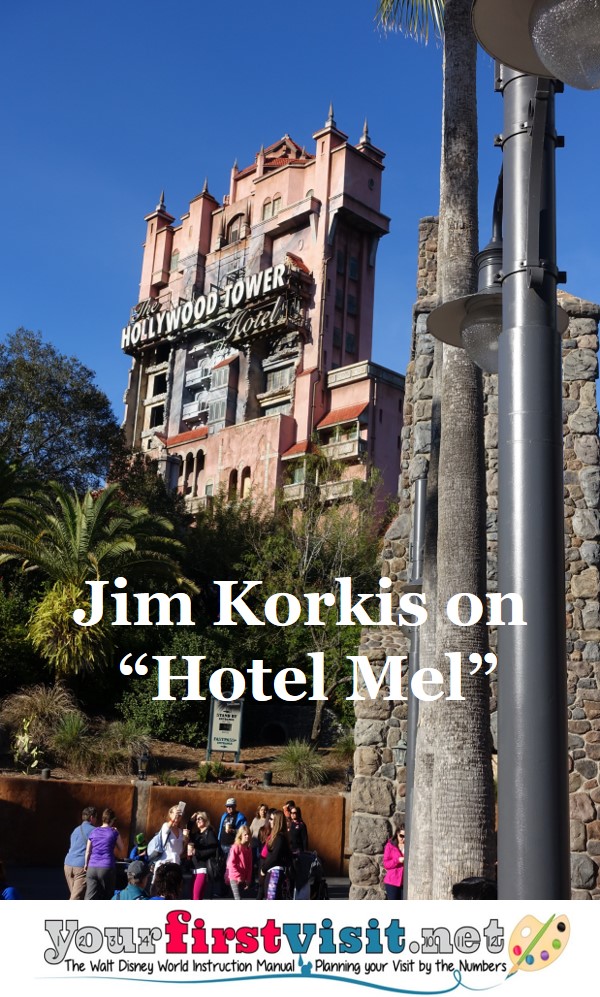
In late 1989, CEO Michael Eisner pitched the idea to filmmaker Mel Brooks to collaborate on a new Disney theme park attraction in hopes it would also lead to Brooks producing films for Disney. After several trips to Imagineering, Mel wanted to combine scary and funny into a Castle Young Frankenstein based on his popular comedic film that would have had a Bavarian village area leading to a drawbridge and the castle where the attraction would be.
The idea further evolved into Mel Brooks’ Hollywood Horror Hotel. The Imagineers jokingly referred to the project as Hotel Mel. Guests would have seen this huge abandoned hotel that might be haunted, and through television monitors be informed that Mel Brooks was directing a new comedy horror movie inside.
Guests would be given a chance to visit the “Hot Set” and maybe even get to be an extra in the film. They would have boarded golf carts (guided by a magnetic wire embedded in the floor) and would experience a coven of witches cooking in their cauldron in the hotel kitchen, encounter Quasimodo the hotel “bellboy”, and even visit the men’s room where Dracula is trying to shave himself in a mirror where he can’t see his reflection and the wolfman is combing himself while Frankenstein is in a stall trying to grab the Mummy’s wrappings from the nearby stall to use as toilet paper.
However, the Imagineers could not come up with a coherent story to tie it all together, and the price for creating these elaborate audio-animatronics figures was cost prohibitive.
Other ideas were pitched, including an attraction featuring the various characters that appeared in author Stephen King’s novels, as well as a partially walking tour narrated by Vincent Price (who had recorded the original Disneyland Paris Phantom Manor narration) about a group of movie stars who had been staying at the hotel but mysteriously disappeared. Throughout the tour, guests would discover clues, and when they finally entered the elevator what had happened to those missing people became very clear, but it was too late to get out.
Eisner suggested making the hotel an actual in-park Disney resort themed to a “film noir” murder mystery revolving around a hotel manager who had gone crazy, that would have included costumed staff interacting with guests and a haunted elevator experience.
Imagineers realized they might be able to incorporate a freefall idea into the haunted elevator. Since Disney MGM Studios was themed to the Hollywood of the 1930s and 1940s, it seemed logical to have a classic Hollywood hotel from that era be the focus of the attraction.
* * * * *
Thanks, Jim! And come back next Friday for more from Jim Korkis!
In the meantime, check out his books, including his latest, Disney Never Lands, and about planned but unbuilt concepts, and Secret Stories of Walt Disney World: Things You Never You Never Knew, which reprints much material first written for this site, all published by Theme Park Press.
Follow yourfirstvisit.net on Facebook or Twitter or Pinterest!!
February 14, 2020 1 Comment



